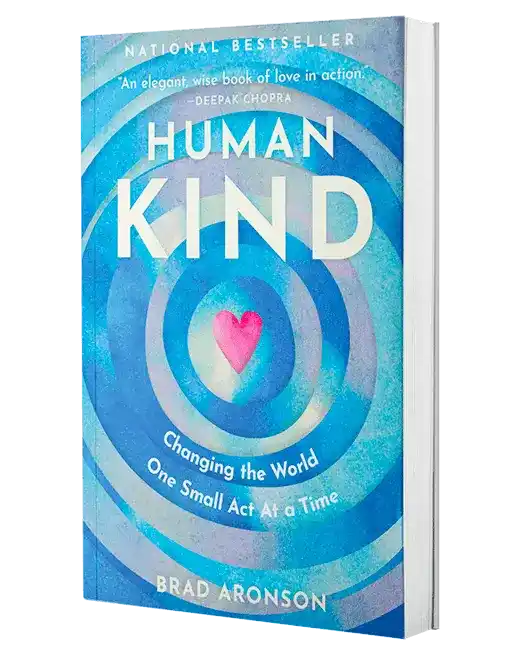When his book HumanKind was chosen for a coveted BookBub Featured Deal in November 2022, Brad Aronson teamed up with Reedsy marketer Ricardo Fayet with one goal: leveraging the Deal to land on a national bestseller list. In this story, Ricardo recounts their quest to reach that list.
The objective: landing on a major national bestseller list
Many authors dream of their book becoming a national bestseller… but what does that mean exactly? In the US, several publications curate a “bestseller list.” The three most respected ones are:
- The New York Times
- USA Today
- The Wall Street Journal
Landing on any of the lists is no small feat. Since they rank books based on weekly sales, you need to sell several thousand copies in just one week to even have a stab at any of these. Some of these lists, like the New York Times one, also require strong sales across several formats (ebook, paperback, hardback, audiobook) and retailers. In other words, if you sell 10,000 ebooks in one week but it’s only on Amazon, you’re not likely to land on any of those lists.
Brad Aronson: HumanKind sells a significant number of copies over the holidays, and I was fortunate to get a holiday BookBub deal. Given both of those factors, I thought the timing was right to layer in additional promotion and have a shot at making the NYT list.
If I made the list, I thought I’d have several opportunities: HumanKind would get a lot more visibility in online and brick-and-mortar bookstores, which often have an NYT bestseller section. I’ve heard that being on the list also boosts sales. I speak at numerous events, and as an NYT bestseller, speaking fees increase. Since all proceeds from the book, including all speaking fees, are donated to Big Brothers Big Sisters, it’s a good chance to raise more funds.
The means: an exceptional book and a BookBub Featured Deal
This goes without saying, but the first thing you need if you want to hit a list is an exceptional book that readers just can’t help but buy when they come across it.
In our case, Brad and I had already worked together in the past on the launch of HumanKind. I already knew how well the stories in the book resonated with readers, and the word of mouth they could generate. More importantly, I knew Brad had done a terrific job with his branding and retailer pages. The book had:
- A beautiful cover that immediately conveys the themes of the book and its tone: inspiring, uplifting, and heartwarming.
- A well-crafted description, starting with editorial praise from Deepak Chopra and Forbes.
- Over 1,400 customer ratings and reviews on Amazon.
- Editorial reviews from dozens of famous authors in his genre.
In other words, HumanKind was already uniquely positioned to compete for a spot as a national bestseller.

Still, even with this kind of book, generating one-week sales of 5,000-10,000 across multiple formats and retailers is a challenge. It requires meticulous planning and a way to reach millions of readers at scale — like a TikTok that goes viral (which is hard to predict)… or a BookBub Featured Deal.
It’s kind of a big deal
If you’re not familiar with it, BookBub is a promotion service that publicizes limited-time book deals (discounts and freebies) to legions of subscribers. Their Religion & Spirituality newsletter reaches over 710,000+ highly interested readers — and landing a Featured Deal listing is like winning the lottery for many authors in the indie space.
HumanKind received a US Featured Deal a few months after its release in 2020, which led to thousands of sales in both ebook and paperback. So when it was selected for a second one in 2022, we knew we could leverage it and shoot for a bestseller list.
Preparing for the promotion: where all the hard work goes
One of the keys to a successful promotion is to ensure that sales don’t all happen on the same day — but instead are spread out across the whole week. This is because most retailer algorithms (and, in particular, Amazon’s algorithms) ignore spikes in sales.
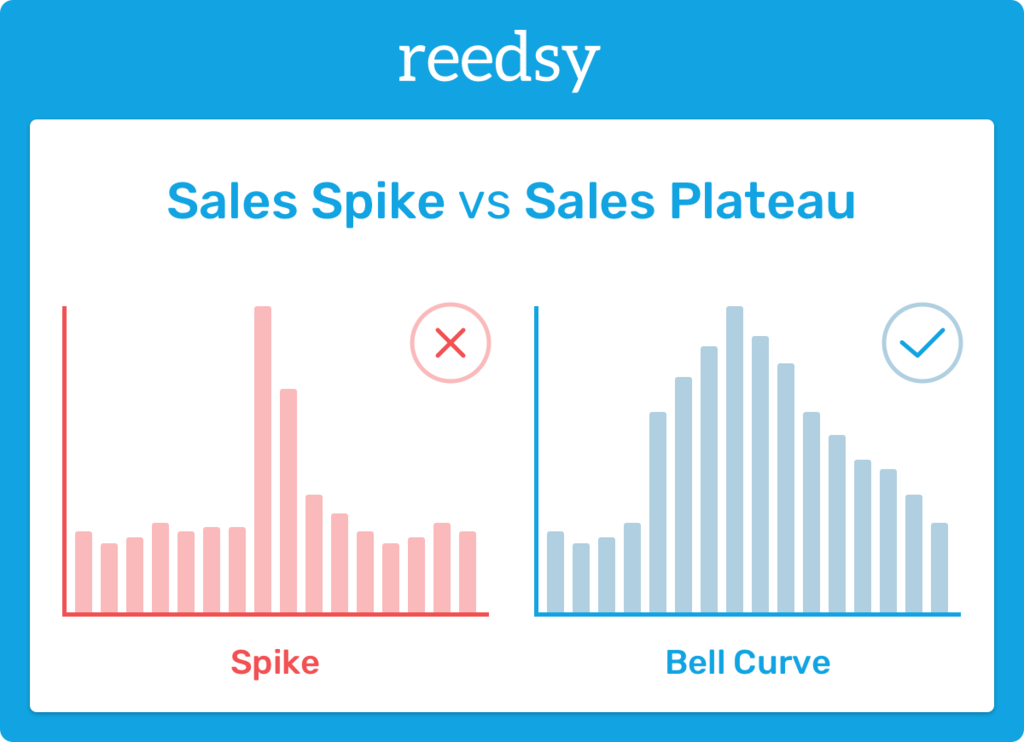
In other words: if your book sells ten copies on an average day then suddenly sells 2,000 copies in one day, only to go back to selling 10-20 books in the following days, the retailers will see that as an anomaly — or worse, an attempt to game the system — and won’t reward the book with additional visibility.
If, instead, the book goes from 10 sales a day to a consistent 1,000 sales a day over several days, the retailers see the book as a “hot trend”, and start promoting it further to their customers.
If you want to reach a bestseller list, you need the retailer algorithms to work for you, not against you. To avoid this single-day spike, we decided to drop the ebook's price not just for the day of the BookBub Featured Deal, but for the whole week.
Prolonging the magic
We knew the Featured Deal would sell thousands of copies, so our next objective was to plan activities for the days surrounding it that would generate similar sales. These included:
Inbound marketing activities. Since HumanKind already had an established fanbase, we aimed to leverage it to drive sales and word of mouth during the discount week. We planned social media posts, emails to influencers, and newsletters to the mailing list.
Outbound marketing activities to reach new audiences. This utilizes other book promotion sites (similar to BookBub but on a smaller scale), advertising on Facebook and Instagram, as well as Amazon and BookBub self-serve ads.
Brad Aronson: I spent days thinking of clever posts and campaigns for my fanbase. Fortunately, I didn’t come up with anything compelling, so I simply asked them to post what they liked about the book. I’m thankful that I didn’t come up with something on my own; having each person post in their own voice was very effective.
In hindsight, I waited too long to ask people to post on social. I asked them midway through the bestseller campaign. It was great that their posts were successful, but I likely would have generated more sales the week of the campaign if I had reached out to my team earlier. That said, of course, sales are great anytime.
I also asked my team to like posts they saw about my book and add a comment about why they enjoyed HumanKind when they saw posts. I hoped this would increase the life of those posts.
We kept a spreadsheet to organize all daily activities up to one week before the start of the promotion, and scheduled all the advertising in advance, after brainstorming on the audiences we would target and the creatives we would use.
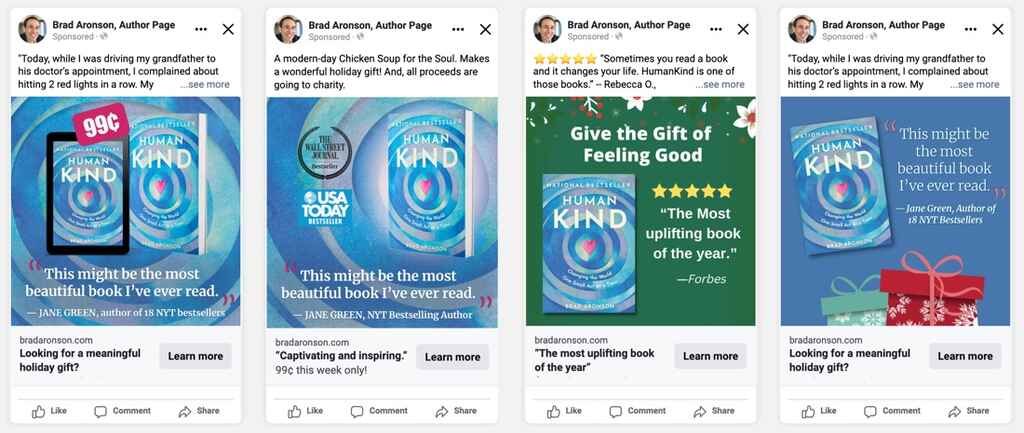
Since our goal was to spread sales across several retailers, we wanted to send traffic from the ads straight to Brad Aronson’s website. From there, readers could choose both their preferred format and retailer.
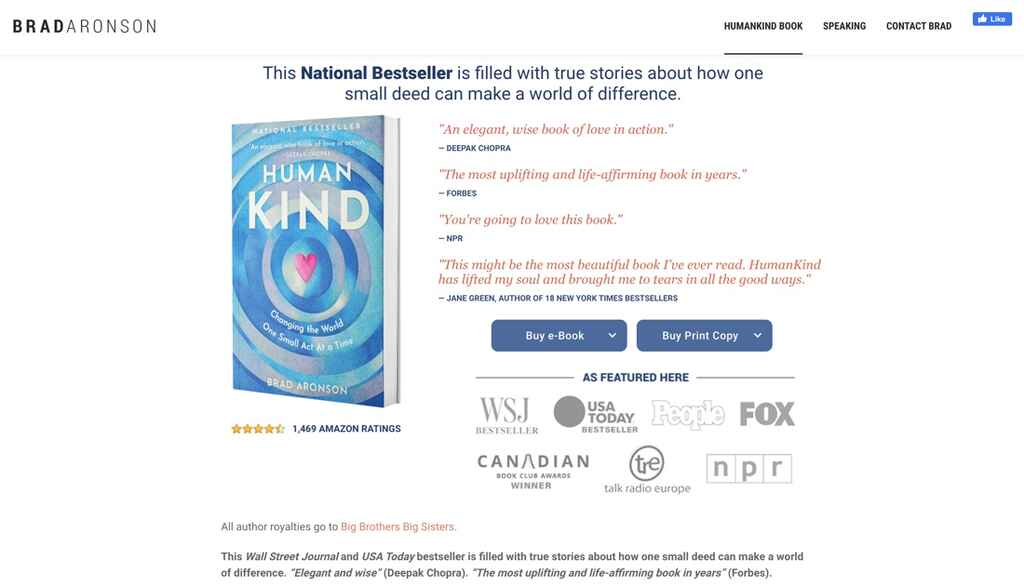
Planning the promotion, designing the ads, preparing the website and scheduling everything in advance took us several weeks, but after that, we were essentially ready to sit down and watch sales come in.
During the promotion: adjusting on the fly
Of course, even the best-laid plans can go awry, so you need to be ready to make adjustments on a daily basis to make sure that the book doesn’t suddenly drop in sales.
In our case, the Facebook/Instagram ads took a while to take off. In the first couple of days, the campaigns were stuck in a learning phase where Facebook was trying to figure out who to show the ads to. This translated into a very high cost per purchase (upwards of $10 spent to generate a sale), and a lot fewer sales than expected.
We had to compensate for this by doubling down on BookBub and Amazon Advertising in the run-up to the BookBub Featured Deal. Little by little, though, the Facebook campaigns finished up their learning phase, and the cost per purchase decreased to $2-$3, allowing us to rely more heavily on that advertising channel through the end of the promotion.

Brad Aronson: The book’s content makes the best social marketing material. I tried all sorts of posts, and it turned out that the ads/promotions containing snippets from the book performed best. Not to mention that they were the easiest to develop. Seems obvious now.
The biggest hurdle, however, hit us midway through the week. That’s when Amazon ran out of print copies in stock. This had two dramatic effects:
- Readers purchasing print copies would not have their books in time for Christmas, which was one of the main incentives of this end-of-November promotion; and
- Even if readers purchased a paperback during the promo, those sales would only be officially recorded upon shipping, so they wouldn’t count towards the list that week.
This issue severely hampered our chances at getting onto a New York Times Bestseller list, but luckily Brad had Plan B in place.
Brad Aronson: Just as our campaign started, Amazon let us know that they were out of inventory and orders probably wouldn’t be fulfilled on time for the holidays. Since the same thing happened in the past two holiday seasons, I was prepared and able to offer readers a chance to buy books through my website with a significant discount. I forwarded those orders to a couple of independent bookstore partners who took care of the fulfillment. In addition to receiving a significant number of orders, this allowed me to meet a lot of readers.
That said, I could see a huge sales drop when Amazon posted that they couldn’t deliver by Christmas. A lot of buyers simply didn’t purchase when there was no Amazon option. Also, my book was selling so well that the Amazon algorithms were helping visitors find my book directly in the store. Those people stopped buying when the book wouldn’t arrive by Christmas, so our Amazon algorithm boost went away.
At the same time, and quite ironically, USA Today paused its bestseller list rankings right around that time as well, leaving us to only opt for one list.
The results: a list, and thousands of new readers

So, was this promotion successful? Yes and no: we failed to make HumanKind a New York Times bestseller that week, but we still managed to get thousands of copies into the hands of readers, and hit some cool milestones.
HumanKind got to #6 on the Wall Street Journal ebook list
The ebook reached a top ranking of #39 on the overall Kindle Store (#1 in Nonfiction)
It stayed in the Top 100 for four consecutive days on the Kindle Top 100
Over 5,000 ebook copies were sold in the week of the promotion
1,300 print books were sold during the week of the promotion and close to 4,000 paperbacks were sold in total (counting sales that happened the week of the promotion but were shipped later).
And what about that bell curve shape we were aiming for? Well, we got as close to it as we could, with a small spike on the day of the BookBub featured deal.
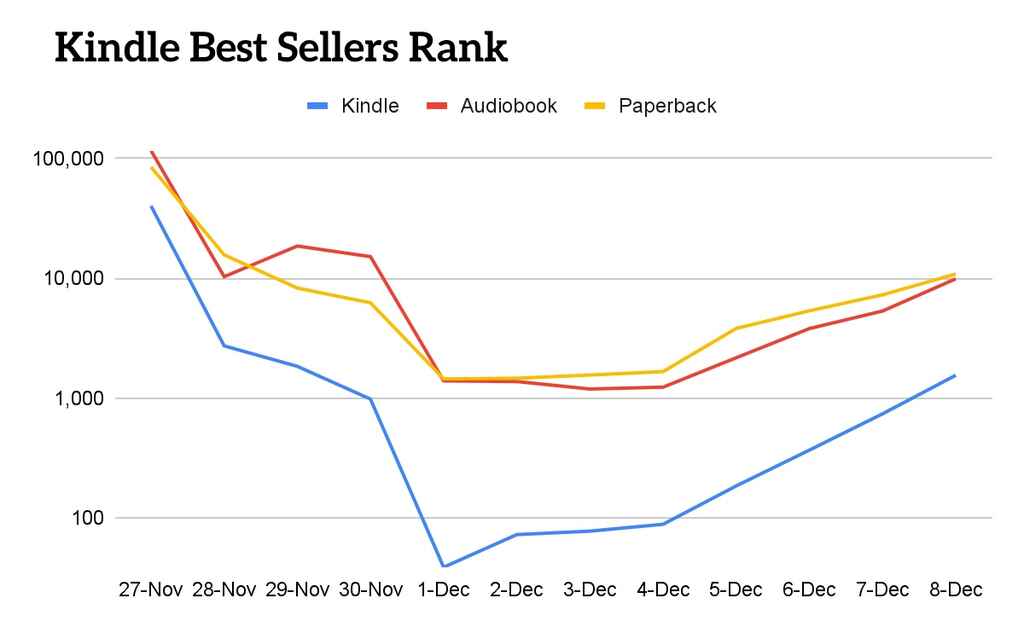
Since we’re looking at the rank of each product on Amazon, the bell curve is inverted: the lower the rank, the higher the sales.
Thanks to this bell curve, the ranks have stayed low for several days after the end of the promo, generating thousands of additional, full-price ebook sales.
To this day (a month later), the daily sales of all formats of the book are up 3x compared to the week before the promotion, a clear sign that the long-tail effect is far from over.
